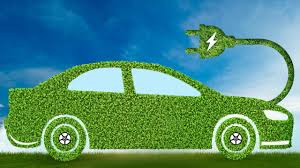In 2023, environmental concerns are at the forefront of global conversations, and the automotive industry is taking significant strides to reduce its carbon footprint. From innovative manufacturing practices to the rapid adoption of electric vehicles (EVs), the sector is transforming in response to the pressing need for sustainability. This shift not only aligns with regulatory pressures but also meets the growing consumer demand for eco-friendly options.
Let’s explore how the auto industry is rising to meet environmental challenges with greener cars and sustainable practices.
1. The Rise of Electric Vehicles (EVs)
Electric vehicles are leading the green revolution in the automotive sector.
- Increased EV Offerings: In 2023, nearly every major automaker has expanded its EV lineup, from compact city cars to luxury SUVs and trucks.
- Longer Range and Faster Charging: Advances in battery technology have made EVs more practical, with ranges exceeding 400 miles and ultra-fast chargers reducing charging times to under 20 minutes.
- Government Incentives: Subsidies, tax breaks, and investment in charging infrastructure have bolstered EV adoption worldwide.
2. Hydrogen Fuel Cell Vehicles (FCEVs)
Hydrogen-powered vehicles are gaining traction as a complementary solution to EVs.
- Zero Emissions: FCEVs produce only water vapor as a byproduct, making them environmentally friendly.
- Heavy-Duty Applications: Hydrogen is particularly suitable for trucks, buses, and trains, where battery weight and range limitations are concerns.
- Infrastructure Growth: Investments in hydrogen refueling stations are increasing, particularly in regions like Europe, Japan, and California.
3. Lightweighting and Sustainable Materials
Reducing vehicle weight is a critical strategy for improving fuel efficiency and extending EV range.
- Advanced Materials: Automakers are using lightweight materials like carbon fiber, aluminum, and high-strength steel.
- Recycled Components: Interiors and body panels made from recycled plastics, ocean waste, and plant-based materials are becoming common.
- Vegan Alternatives: Sustainable fabrics and leather substitutes are replacing traditional materials in car interiors.
4. Cleaner Manufacturing Processes
The shift to greener cars extends beyond the vehicles themselves—it’s also about how they’re made.
- Renewable Energy in Factories: Automakers are powering their plants with wind, solar, and hydroelectric energy.
- Circular Economy Practices: Companies like BMW and Volvo are embracing closed-loop recycling, where materials from old vehicles are repurposed for new ones.
- Water Conservation: Advanced manufacturing techniques reduce water usage and minimize wastewater in production facilities.
5. Improved Internal Combustion Engines (ICEs)
While EVs dominate the headlines, internal combustion engines are also becoming greener.
- Hybrid Technology: Plug-in hybrids (PHEVs) offer a middle ground, combining electric motors with traditional engines for improved efficiency.
- Alternative Fuels: Biofuels, synthetic fuels, and compressed natural gas (CNG) are reducing emissions from ICE vehicles.
- Eco-Friendly Features: Start-stop technology, cylinder deactivation, and aerodynamic designs enhance fuel efficiency.
6. The Role of AI and Connectivity in Green Driving
Smart technology is helping drivers reduce their carbon footprints.
- Eco-Driving Assistance: AI systems provide real-time feedback on driving habits, promoting fuel-efficient behavior.
- Energy Management in EVs: AI optimizes energy use based on driving conditions and routes, maximizing battery efficiency.
- Smart Navigation: Connectivity features help drivers avoid traffic and take energy-efficient routes.
7. Recycling and End-of-Life Solutions
As more EVs hit the road, the auto industry is focusing on battery recycling and vehicle lifecycle management.
- Battery Recycling Initiatives: Companies are developing methods to recover valuable materials like lithium, cobalt, and nickel from used batteries.
- Second-Life Applications: EV batteries are being repurposed for energy storage systems in homes and businesses.
- Sustainable Disposal: Programs are emerging to ensure that vehicles are dismantled and recycled responsibly at the end of their life cycle.
8. Green Policies Driving Change
Governments worldwide are implementing policies to accelerate the shift to greener cars.
- Zero-Emission Vehicle Mandates: Several regions, including the EU, California, and China, have set deadlines for phasing out gasoline and diesel vehicles.
- Corporate Emission Targets: Automakers are committing to ambitious goals, such as achieving carbon neutrality by 2035 or 2040.
- Infrastructure Investment: Public and private sectors are collaborating to build EV charging networks and hydrogen refueling stations.
9. Consumer Awareness and Demand
As climate change awareness grows, so does the demand for sustainable vehicles.
- Eco-Conscious Buyers: Consumers are prioritizing fuel efficiency, low emissions, and sustainable features when purchasing cars.
- Subscription Services: Car subscription models reduce waste by extending the lifespan of vehicles through shared use.
- Transparency: Automakers are highlighting their green credentials, such as carbon-neutral manufacturing or sustainable sourcing.
10. Challenges Ahead
While progress is being made, the journey toward greener cars is not without obstacles.
- Battery Production: Mining for lithium and cobalt has environmental and ethical implications, requiring sustainable sourcing solutions.
- Infrastructure Gaps: EV and hydrogen infrastructure still need to catch up to demand, particularly in rural areas.
- Cost Barriers: Green technology can be expensive, limiting accessibility for some consumers.
Conclusion
In 2023, the automotive industry is rising to the challenge of reducing its environmental impact through innovation, collaboration, and commitment to sustainability. Whether through the rapid growth of EVs, the exploration of hydrogen, or the use of recycled materials, automakers are proving that greener cars are not just a trend—they’re the future.
As these efforts continue to evolve, the dream of truly sustainable transportation is becoming a reality, paving the way for a cleaner, greener planet.
0




